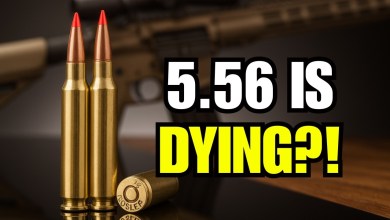Dual BOA Balances Comfort, Performance: Salomon S/Pro Supra 120 Ski Boots Review

Are two BOA dials better than one on ski boots? If you’re a skier who struggles with hotspots, loses feeling in your feet, and has difficulty getting into boots, the dual BOA version of Salomon’s medium-volume S/Pro Supra 120s might help you find peace.
Salomon tried BOA two seasons ago on its S/Pro Supra line with a dial on the forefoot and buckles up top. This season, the Supra comes in a dual BOA configuration that completely ditches buckles.
The S/Pro Supra double BOA is an all-mountain ski boot — though you can still get it in a traditional four-buckle build or with BOA only on the forefoot.
This Dual BOA build will make many feet happy with a plush, customizable liner and heat-moldable plastic shell. The BOA has some drawbacks, but it provides even pressure and micro-adjustability that appeals to skiers who struggle with pinch points and hotspots in other boots. The moderate 120 flex and upright stance of the S/Pro 120 will also be a sweet spot for many skiers.
In short: The dual BOA Salomon S/Pro Supra ($990) ski boots provide ease of use, evenly distributed pressure, and minute adjustability for fit. These boots will suit beginner and advanced skiers alike, especially those looking for a more comfortable, customized fit.
Scope out our other prized ski boots in the best Ski Boots buyer’s guide.
-
Highly customizable fit -
BOA system spreads pressure evenly -
Relaxed, upright stance slows fatigue
-
Double BOA is tedious compared to four-buckle -
Liner packs out quickly
Salomon S/Pro Supra 120 Dual BOA Ski Boots Review
Ski boot manufacturers have used the routed-cable BOA system for a few years. But the 2025-2026 season will see more dials on ski boot shells than ever. This season, I got plenty of practice with the BOA system, skiing about 35 days between the various BOA boots I tested throughout winter.
Honestly, I hated the first few BOA ski boots I tried, and it took many days on snow to understand the pros. For confident skiers, there are some significant advantages in terms of fit and comfort. Other skiers will hate BOA.
Getting a precise, snug initial fit is even more critical when dealing with BOA closure systems. Take this as the obligatory recommendation to find a knowledgeable boot fitter to help you choose your boots and customize them after purchase.
I have a very low-volume foot, so I have more dial tightening to do than folks with wide feet. I recommend selecting the snuggest-fitting boot when using BOA: The less volume there is to be closed via the closure system, the less time you’ll spend twisting the knobs.
Double Dial: Micro-Adjustability
The primary pitch for BOA ski boots is micro-adjustability. Buckles have preset positions, and while many buckles permit some micro-adjusting by twisting the handles, many skiers know the feeling of one setting being too tight and the next being too loose and never finding “just right.”
BOA promises tiny adjustments with each turn of the dial so that you can see “just right,” and the dials on the S/Pro 120s do that well, rotating in both directions so you can run them like a volume knob on a stereo up and down.
That said, single BOA ski boots with a dial on the forefoot don’t drastically change the skiing experience, but change the closure process. The upper cuff with BOA alters the boot’s flex profile slightly, but most skiers aren’t going to notice a significant change from its four-buckle boot.
Even Pressure
The other big difference is the pressure distribution. The cable system uniformly wraps the foot and the lower shin, reducing pressure points on the top of the foot and locking the heel.
Combined with the plush liner and flexible plastic of the S/Pro Supra boots, I agree that pressure is evenly distributed. No matter how hard I tried to crank them down, I never felt any hotspots.
While the Supra line is considered medium-volume, I think these would also make a great high-volume option since the last can expand up to 106 mm, and the plush liner and moldable shell have plenty of room to accommodate a range of feet. Once the boot fitting is optimized, the Dual BOA system will avoid crushing hotspots and high arches.
Dial Downsides: Time-Consuming (Especially for Narrower Feet)
As an expert skier who has used buckles since he was 6, I find BOA tedious. The micro-adjustability is excellent, but because each twist only moves the cable slightly, it takes me at least 20 twists per dial to get the Dual BOA fit dialed. In a looser-fitting pair I tested last season, I averaged 40 twists per knob. Woof.
When wearing the S/Pro Dual BOA and the K2 Cortex with double dials, I was suddenly taking longer to get ready at the top of a run than my snowboarder friends. On average, it takes me 5-10 seconds to close the eight buckles of my Tecnica Mach1 LV boots.
I averaged over a minute to get both boots right to dial in the four dials on the S/Pro 120s from wide open. I could get this down to about 30 seconds if I didn’t open the BOAs completely between runs, even though I prefer loosening completely for the lift ride. The current BOA H+i1 system used in the S/Pro allows you to micro-adjust in reverse, rather than just pull to loosen the cabling completely.
This dialing time is the biggest drawback of BOA for me and other skiers who want to crank boots down tight for power transmission and then loosen them for maximum blood flow on the lift.
Lesser Gripes
The dual BOA distributes pressure more evenly, but if you prefer going tighter around the ankle and looser on the toes, that even pressure will feel like a compromised fit. You need to stop tightening the upper cuff when it’s snug on your upper calf, even though it may still feel a bit loose above your ankle.
I also found that it’s harder to get a really tight, race fit with BOA compared to buckles. You never want to crank boots down so hard that your feet go numb, but buckles give you great mechanical leverage to quickly compress the shell on your foot. BOA tightens slowly, and as you get tighter, it gets harder to make those last few twists.
They’re also harder to operate wearing mittens than traditional buckles, and I usually remove my mittens to work the dials.
Who’s This Ski Boot For?
While BOA isn’t quite there yet for me as an expert skier with a lower-volume foot, I believe the Dual BOA S/Pro 120 Supra will be an upgrade on four-buckle for the right person.
Tightening the dials for high-volume feet won’t be as tedious as what I experienced, and it should alleviate common pinch points for a more even, comfortable fit, ease of use, for intermediate to advanced skiers.
Dedicated carvers will probably want to find a boot with a more forward lean (consider the Tecnica Mach1 series) that starts them in a more athletic position and doesn’t require as much flexing into the boot to get their knees over their toes. But if they’re not charging with gritted teeth on every run, the upright stance might fit their ski style better and reduce fatigue over a full ski day.
The 120 flex and medium or high-volume fit make the S/Pro Supra 120 an attractive option for intermediate to advanced skiers. It’s a supremely comfortable boot with a plush liner, lots of customization, and a range of volume available with proper boot fitting. Ensure you get a snug initial fit so the boots don’t get sloppy after the initial break-in period.
Read the full article here








